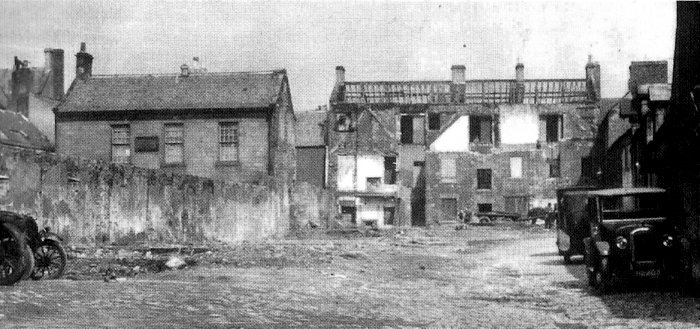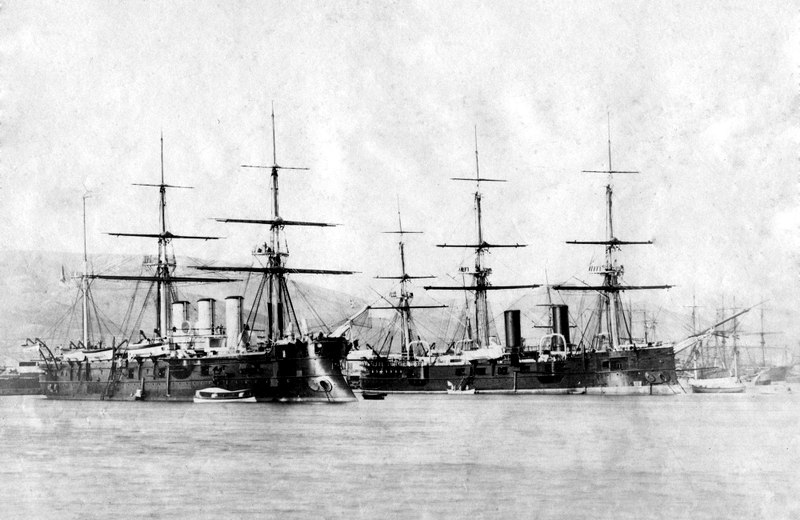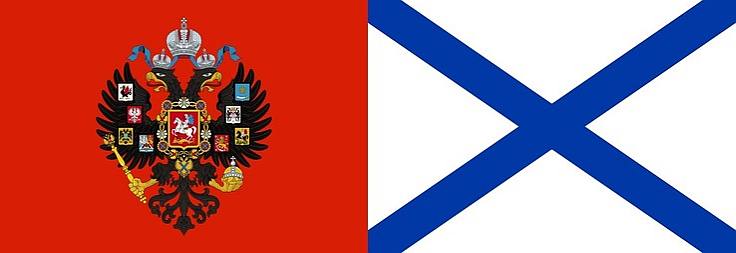
Top left: the old Berwick Grammar School (rebuilt 1820), where Lambert was educated, in Golden Square c.1927. (To the right, demolition can be seen taking place to make way for the old A1 road, prior to the opening of the Royal Tweed Bridge in 1928. The frontage of the old grammar school now forms part of the Berwick Baptist Church.) Photograph: Berwick Record Office.
While the story of Berwick’s War with Russia is generally well known, another lesser known link to Russia is William Blake Lambert, a Berwick man who became Engineer-in-Chief to the Imperial Russian fleet in 1859. Russia at that time was under the reign of Emperor Alexander II.
William Blake Lambert was the son of Peter Lambert and he was born in Berwick-upon-Tweed on 16th June 1816. William was educated at Berwick Grammar School, and the University of Aberdeen.
He moved to London in 1836, and entered the employment of Messrs Maudslay, Sons and Field, with whom he remained until the year 1848, when, on account of the part he took converting the Government paddle-wheel steamers into screw-propellers, he was invited to enter the Government service, and was posted to Portsmouth dockyard as Assistant Chief Engineer. He resigned in 1853, to become Manager of the General Navigation Company at Southampton, and subsequently superintended the winding-up of that company’s affairs.
Engineer-in-Chief to the Imperial Russian fleet
In 1859 he was asked by the Russian Government to enter their service, and he went to St. Petersburg, where he was immediately appointed Engineer-in-Chief to the Russian fleet. He held that appointment until the year 1866 when he returned to England.

The Imperial Russian armoured cruisers Pamyat’ Azova and Vladimir Monomakh in Piraeus, Greece, in the late 1800s. Photograph: Wikimedia Commons.
In an advert in the Western Daily Press (Bristol) on 5th August 1871, William Blake Lambert is shown as a Trustee in a share issue of 80,000 shares at £10 each in the Russia Copper Company (Limited). The company had been formed to purchase, work and develop the remarkable Mineral and Agricultural Properties owned by Mr Alexander Brogden, M.P. and others, and previously held by the late Lieutenant Michael Wassilwitch Paschkoff, in whose family they had been for upwards of a century. The Estates were known as the Paschkoff Estates, and comprised a total acreage of 447,375 acres, all freehold. The three estates which made up the Paschkoff Estates were situated in the Orenburg and Ufa districts of Eastern Russia.
William Blake Lambert died, after a few days’ illness, on 18th February 1874 at St Petersburg where he had gone for a few weeks on private business. In his will of 1874 he left effects approaching £40,000, which at today’s value would be almost £6 million. He was elected an Associate of the Institution of Civil Engineers on 6th March 1849, and was transferred to the class of Member on 16th February 1864.
Marriage and family
William married Margaret Isabella Paul, the daughter of George William Paul and Sarah Jane Dalton, on 9th July 1849 at St Nicholas Church in Brighton, Sussex. In the 1851 census of England, William Blake Lambert and Margaret were recorded as staying in Calf Close (now Mount Road), Tweedmouth, Northumberland. The following are the details: William Blake Lambert aged 34, civil engineer, assistant chief engineer in Portsmouth Dockyard, born Berwick-upon-Tweed; Margaret Isabella Lambert aged 25, born Sydney, NSW; and son Sydney Paul Lambert aged 11 months, born Southsea, Hampshire. They were visiting Robert Bontein Wetherhead solicitor and his family.
William and Margaret had four children: Sydney Paul Lambert born c.1850; Margaret Tempest Lambert, born 29 July 1851 – died March 1855; Isabella Tempest Lambert, born 19 March 1855 – died September 1938; Vera Margaret Lambert, born c.1863.
Banner Image
The banner at the top of the page comprises the Naval Standard of the Emperor of Russia, which was used from 1858 to 1917, and the Naval Ensign of Russia, the St Andrew flag.
Sources:
Obituary of William Blake Lambert, in the Journal of the Institute of Civil Engineers, 1874.
British Newspaper Archive. Western Daily Press (Bristol), Saturday 5 August 1871.

